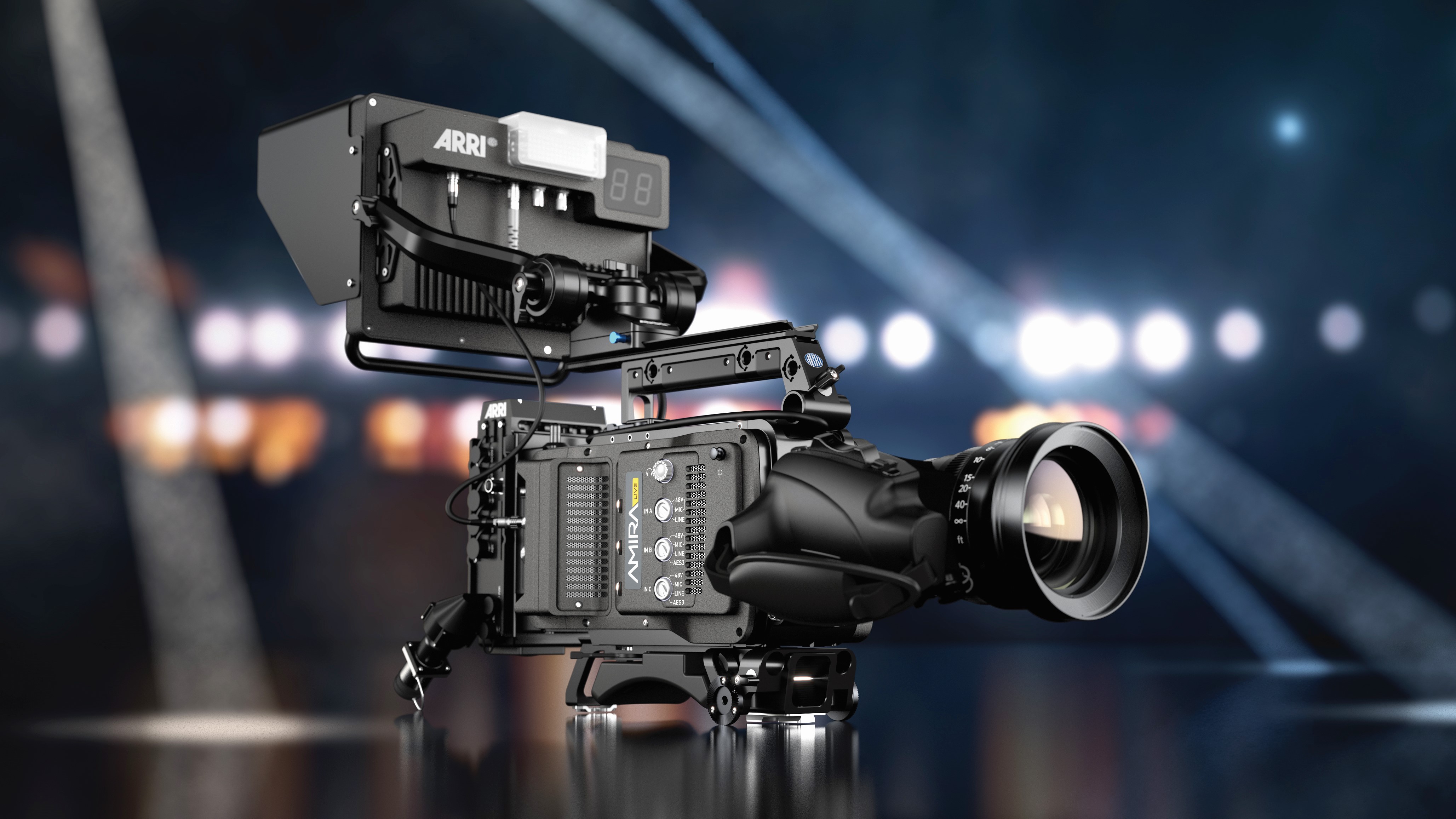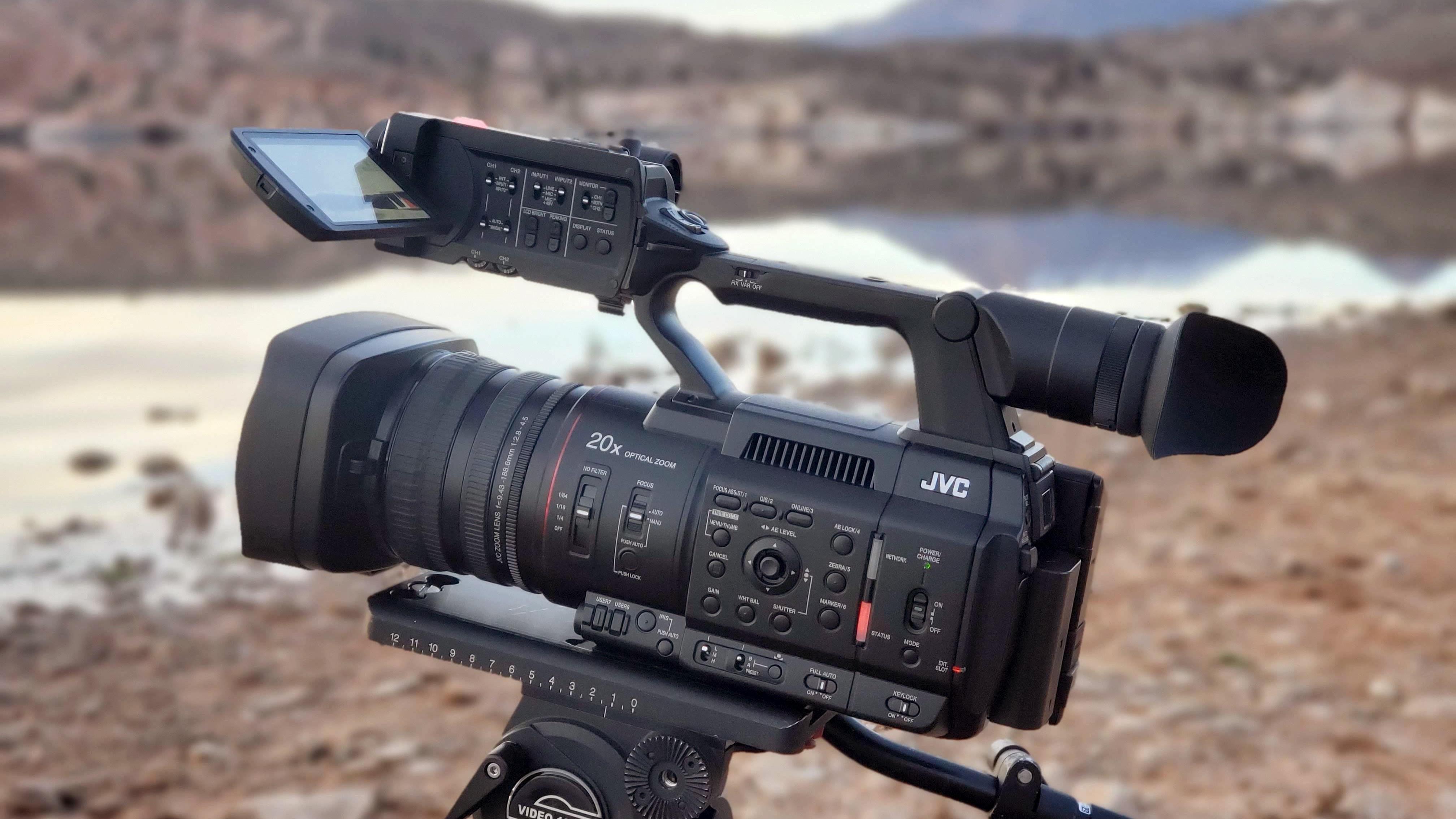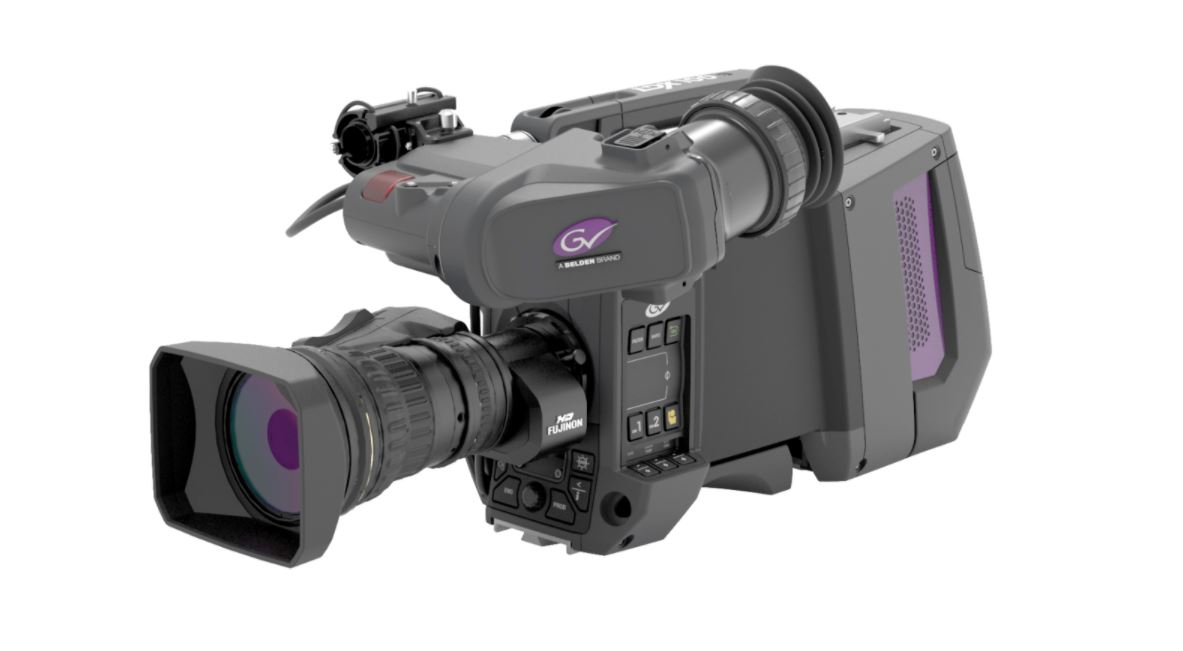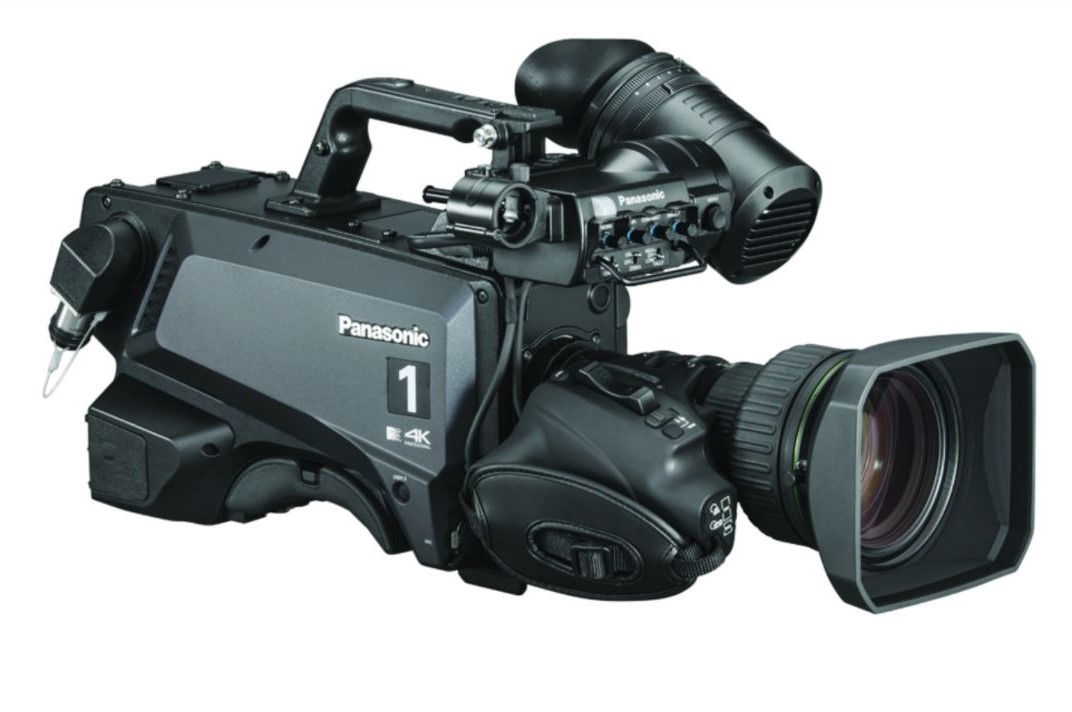Camera Makers Emphasize IP, 4K Capabilities
COVID has meant fewer new product launches, renewed commitment to remote production

LONDON—The dramatic reductions in live events and sports have had a commensurate impact on equipment buying for mobile production. The pandemic has also given the industry reason to re-evaluate workflows and production practices, especially the move to remote production over IP.
“The cancellation or delay of major sporting events, as well as music and many other productions, certainly had an impact on our customers’ business,” says Klaus Weber, principal, camera solutions & technology for Grass Valley. “OB, in particular, had to organize their business around the reduced number of events, so investing in new cameras was often not a high priority.”
However, the pandemic has accelerated the move towards investing in distributed infrastructures and workflows. Weber adds, “IP cameras enable optimized integration in remote productions, which is ideal in the current climate.”
Manufacturers are understandably reluctant to admit any downturn in sales, so let’s take their reports at face value.
“The pandemic hasn’t really affected Blackmagic Design camera sales, and the demand across our range has actually increased,” said Craig Heffernan, technical sales director, EMEA for the company.
JVC says any reduction in demand for traditional live event production has been off-set by an increase in smaller or lower tier event streaming requirements.
Budgets for such production setups are relatively limited compared with larger OBtype events, according to John Kelly, general manager, EMEA for JVC.
The professional video industry's #1 source for news, trends and product and tech information. Sign up below.
“Typically using two to four cameras, and with content delivery over IP rather than traditional over-the-air, this has allowed sports clubs to retain an income stream and engage not only with their normal core audience but also expanding to those who may not be able to attend in person,” Kelly said.
PENT UP DEMAND
With most large capital expenditures reduced or postponed, purchases of studio cameras by broadcasters have slowed. Hitachi suggests there’s a lot of pent-up project planning and expects to see a surge of buying as the health situation improves.

“While sales to M&E customers have been delayed, uptake of broadcast-class cameras in other markets has held strong,” notes John J. Humphrey, vice president, business development at Hitachi America. “For example, the need to adopt or improve online streaming production has led many educational institutions and houses of worship to upgrade kit. These customers also benefit from the advantages of system cameras for their multicamera live events.”
Sony says the impact of its camera sales for non-scripted media and news was also low as consumer demand for news skyrocketed.
“We also saw higher demand for smaller, streaming-capable palm-type cameras for streaming live events in the corporate and private sector,” said Hiroshi Kajita, head of media solutions, Sony Professional Solutions Europe. “The impact on our innovation has been limited as our roadmaps reflect customer priorities—new HFR capabilities as well as IP-based and distributed workflow options were brought in during the pandemic.”
The absence of the usual trade show cycle is not thought to have inhibited R&D but it’s equally apparent that there have been fewer significant innovations introduced in this period. But that’s not necessarily a bad thing as the lack of physical shows on the calendar has reduced the industry’s traditional pressure to announce new products, often before they’re ready to ship.
“‘Virtual’ shows have been limited in their ability overall but have been even less effective for product categories such as cameras where ‘seeing is believing,’” says Humphrey. “The ability to try cameras in person is a critical part of customers’ buying process. We eagerly look forward to the return of traditional trade shows, hopefully in the fall.”
By far the bigger impact has been on the customer engagement side. “We’ve missed the opportunity to interact with customers and partners on a wide scale,” Kajita concurred.
HD AND UHD
The continuing move toward 4K production while not yet abandoning HD is the other main trend. This includes requirements for HDR and Wide Color Gamut productions in 1080p as well as UHD.
“Shifting from a ‘nice to have’ to a prerequisite for quality broadcasts, the ability to shoot in 1080p and 4K are the impetus behind new production formats,” says Michael Bergeron, senior product manager, Live Production Systems, Panasonic. “From a broadcast perspective, the ability to purchase an affordable camera today that can easily be upgraded to 4K in the future is allowing studios to enhance their workflows and offer more productions—in 4K and HDR—while having a camera that meets their immediate needs and can evolve with them.
“Similarly, the ability to support a cinema workflow with studio camera technology allows for multicamera productions by using the lenses of broadcast cameras and undergoing the same post-process for cinema production,” Bergeron adds.
Perhaps that’s why Sony chooses to flag the newest camera in its cine range for this article rather than a traditional broadcast imager. “The FX3 demonstrates the goal for Sony to create tools for content creators in all budgets and size requirements,” the company said when it launched the camera in February. The $4,000 model is comparable to BMD’s PCC range and can record 4K at 120fps (or HD 240fps) for documentary work.
There is increasing demand for virtual studios with many popping up at existing TV facilities such as Dock10, which services U.K. broadcasters. Studio cameras are evolving to meet demands for greater automation and integration with robotic systems and tracking systems to incorporate AR and 3D graphics.
“While these are all generally supported by IP connectivity, IP is not driving studio camera upgrades yet, since these cameras are designed to be run by in-person operators,” says Bergeron. “That said, IP is having a much bigger impact in the next generation of cameras as IP infrastructures are becoming more widespread and bring more workflow options.”
NEW GEAR
Arguably the most significant debut in this market is from ARRI. It’s not a name associated with live but it has redesigned the Super 35 cine camera Amira for multicamera broadcast. ARRI has integrated the signal directly into a SMPTE 311M fiber transmission system and eliminated cabling, resulting in what it says is a “cleaner and more reliable” setup for live productions.
The system permits Sony RCP image parameter and iris control for ENG-style PL and B4 lenses including box lenses, EF lenses and of course, prime and cine zoom lenses. An “even more flexible and advanced RCP operation” is offered via a Skaarhoj shading control, which supports access to LUTs and setup files.

Recent updates to JVC camcorders (GYHC500/550 and GY-HC900) include Network Adaptive Bitrate, lower latency and SRT support for return video over IP. The company has also incorporated VITC (vertical interval timecode) and LTC (longitudinal timecode) functions with this latest update. Together with the implemented NTP (Network Time Protocol) function, these are ideal for synchronizing multiple remote cameras during live event production and streaming.
Blackmagic Design’s most recent hardware updates have arrived in its Pocket Cinema Camera range with the release of the 6K Pro. This allows you to connect the 6K Pro to an Blackmagic switcher (like the ATEM Mini) and control camera parameters as well as lens and tally light, as part of HDMI workflows for streaming and OTT.
“We want to take the technologies used in high-end broadcast cameras and replicate them into areas like live streaming, where we have seen the most demand,” explains Heffernan.

Grass Valley’s developments reflect the increase in demand for remote productions. Its LDX 100 camera is claimed as the only system camera to offer native IP connectivity, allowing for integration directly into IP infrastructures.
“With products such as Creative Grading we enable highly customizable camera control panels with graphical representation of all setting parameters on a practically unlimited number of mobile display devices,” Weber explains. “We’ve also opened up new image control possibilities away from the control room. It enables improved decentralized productions and easier communication between operators involved in managing optimized image settings for the production.”
Hitachi’s CU-HD550 CCU (timed to be unveiled at 2020’s cancelled NAB Show) can upscale natively-acquired HD video to 4K and outputs the result over 12G-SDI. “While 4K adoption is growing, HD production continues to thrive, with many high-profile events being produced in 1080p60 with HDR,” comments Hitachi Engineering Manager Emilio Aleman. “The new 4K output feature is for content creators who have some UHD production requirements but aren’t yet ready to invest in full 4K cameras and infrastructure, while the dual HDR/SDR workflow functionality helps producers optimally reach multiple generations of displays.”
The UHK-X700 is the new flagship for Ikegami’s UNICAM XE 4K series. Launching this quarter, the model incorporates three 2/3-inch CMOS sensors with global shutters. HDR HLG is supported as well as options for BT.2020 and BT.709 color spaces. 4K is available as a 12G-SDI feed directly from the camera head, allowing the UHK-X700 to be integrated into a wireless system. High frame-rate shooting at up to 2x speed in 4K or 8K at HD is also possible via the base station.

Panasonic’s most recent OB camera, AK-UC3300, contains an 11MP sensor for 4K capture and a 2x HD high-speed function and simultaneous HDR/SDR feature set. The new AK-HC3900 HD studio camera includes a 4K-CMOS sensor and, combined with a CCU and Remote Operation Panel, can construct a long-distance optical fibre transmission studio camera system. This camera includes a future upgrade option to support 4K at 50/60p, “making it a perfect option for broadcasting live events,” says Bergeron.
Adrian Pennington is a journalist specialising in film and TV production. His work has appeared in The Guardian, RTS Television, Variety, British Cinematographer, Premiere and The Hollywood Reporter. Adrian has edited several publications, co-written a book on stereoscopic 3D and is copywriter of marketing materials for the industry. Follow him @pennington1

